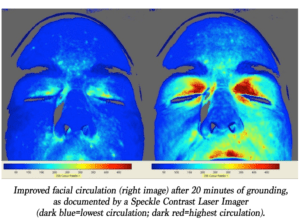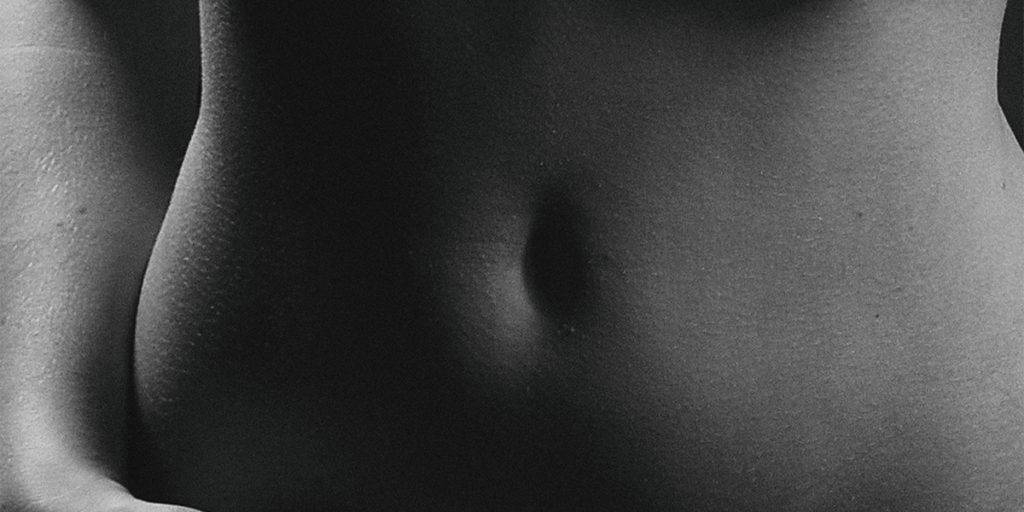One of the participants in an Earthing study some years ago was a woman named Cindy with multiple sclerosis. She, like others in the study, was grounded for about forty minutes. Afterward, she visited the restroom, and then rushed back, a surprised look on her face, to the office where participants were being grounded.
“I just took one look at myself in the mirror and couldn’t believe what I saw,” she said. “It was as if I had slept for three days or been on a healing retreat. I looked so much better and younger. I’d been very tired, sad, and stresesed out. I was amazed.”
Cindy’s revelation was not unique. Many other women have made similar comments, even after just a half hour or hour of grounding, or after sleeping grounded. They have noticed a difference. They quickly feel better and look better. They talk in terms of more radiant skin, brighter eyes, and more vitality.
Study: Grounding the body improves facial blood flow
A 2014 study documented for the first time an improvement in facial blood flow, one of the likely ways that Earthing can potentially − and quickly − create a complexion boost and improve how you look.
How quickly?
Better facial blood flow occurred within one hour, according to the study. Such improvement implies enhanced nourishment of facial tissues and functions, and, based on Earthing observations over the years, one can expect that continued grounding would generate continuing benefits to skin, complexion, and vitality – in essence, an “Earthing facelift.”
In the study, electrophysiologist Gaétan Chevalier, Ph.D., visiting scholar in the Department of Family Medicine & Public Health, School of Medicine, UC San Diego, and the director of the Earthing Institute, used a double-blind model with forty subjects to determine if Earthing can improve facial circulation within one hour. He used both sophisticated Laser Speckle Contrast imaging and thermal imaging to document changes in circulation.

Participants were individually tested over the period of an hour while sitting in a comfortable recliner chair. The chair was fitted with a grounding mat and pillow. Grounding patches were also placed on both palms and soles of the feet. The Earthing wires used to connect the participants were randomly assigned to either allow or disallow conduction of the Earth’s energy. So individuals were either actually grounded (27) or sham grounded (13). Both techniques showed a clear improvement in facial blood flow regulation from grounding. No such result was found among the non-grounded participants. The laser camera study was published first. The thermal imaging study will be published at a later date.
Dynamics of better facial blood flow
The results from the laser camera showed a fascinating and clear rhythmicity in the facial blood flow of grounded subjects. Such rhythmicity relates to a more efficient regulatory effect on blood flow by the autonomic nervous system (ANS), and another example of how Earthing contributes to homeostasis and more natural functioning in the body.
As Dr. Chevalier notes in his paper, the ANS regulation of facial blood flow dynamics “brings to mind an analogy of an efficient thermostat that activates or deactivates the heating or cooling system according to temperature fluctuations within the controlled environment. For the body, grounding may contribute to the restoration of regulation by the ANS of the distribution of blood, and therefore needed oxygen and nutrients, to the various organs and systems according to their needs.”
Dr. Chevalier suggests other mechanisms are likely in play as well:
1) Improved zeta potential and blood fluidity. Earthing increases the negative electric charge on the surface of red blood cells, promoting reduced clumping, a more desirable viscosity (blood thinning effect) and better flow. For more information see our zeta potential study and video clip of blood flow change.
2) Improved overall physiology.
3) A calming effect on the body and normalization of the stress hormone cortisol. Stress has been linked to many skin conditions. In the study, Dr. Chevalier also asked the participants to fill out a standard mood questionnaire before and after each session during which they were either grounded or sham grounded. When he analyzed the answers he found that the grounded group had a more pleasant experience, felt more positive, and was more relaxed. The results correlate with previous Earthing studies demonstrating reduced stress and greater calmness.
4) Reduced inflammation. Observations over the years clearly indicate that wounds and injuries heal faster when the body is grounded, and that the common signs of inflammation are reduced or eliminated.
The 2014 study helps explain also the results of an informal survey conducted at a women’s wellness conference two years earlier. The 100 women in attendance had filled out a questionnaire before and after one hour of grounding while seated during a lecture in the conference hall. When their answers were totaled up, about 75 percent or more reported that after grounding they had a better mood, more energy, and an improved complexion radiating more vitality and color. Here are the results of that survey.
In 2015, we received this feedback from a 56-year-old mother: “I went out to supper last week with an old friend, a facial reconstruction surgeon. He asked if I had had a ‘makeover’ or surgery as I looked about 35. My face is so much more youthful that even I have to constantly check in the mirror. Where did those wrinkles go?”
There’s an old saying that beauty comes from within. No doubt about that. Now it may be equally correct to say that beauty comes from the ground as well.
The age of the “Earthing facelift” is here!

